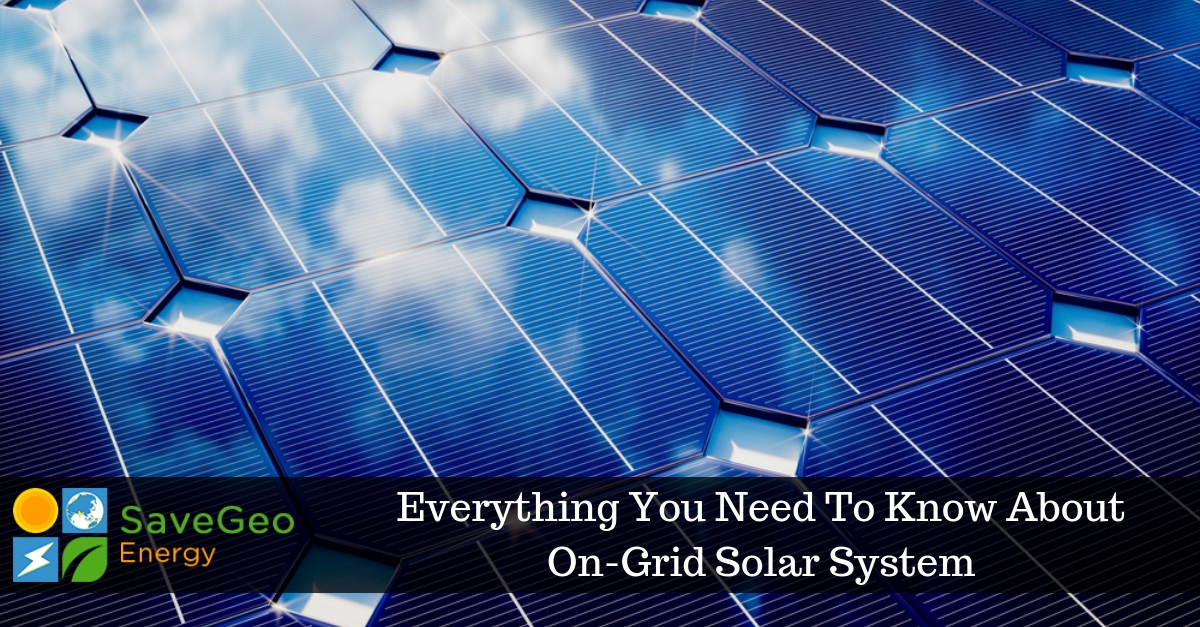On-Grid Solar System – Face Of The Energy Industry In India
As the on-grid solar system gives an added advantage to earn from the solar power system through net metering policies, most of the people or industry prefer to install this rooftop solar power system to avail a credit in their electricity bills. However, when it comes to purchasing and installing the system, buyers have numerous questions revolving in their mind, related to the method of installation, subsidies, prevailing net metering rules, suppliers and more. Well, you can get all your answers in this article. Before we go in-depth, let us first understand what on-grid solar system is and how does it work?
On-Grid Photovoltaic Solar
An On-grid or grid-connected solar power system relates to a method that unites to the utility grid. It generates electricity from a solar array, which is a linked collection of solar panels, sending the excess power generated back to the network and experience credit for that in the utility bills. As a result, the need for electricity is taken care of by the power grid at night time.
Operation of On-Grid Solar System
In the on-grid solar system, solar panels connect to one or more inverters, which later convert the direct current (DC) from the solar panels to alternating current (AC) for your premise. Moreover, there is no requirement of backup as batteries are not involved in this rooftop solar power system. However, to provide buffer without compromising the performance and quality, this solar system can be customized to include a small battery bank.
No batteries make on-grid solutions relatively cheaper and easy to install. The excess energy after utilization fed back to the grid, which later helps in the active use of the generated energy and conversion in the power bill, as you can sell the surplus power back to the electricity supplier.
Importance of On-Grid Solar System
Easy to install
To install an on-grid solar system is very simple and can be done by oneself on the rooftop. Moreover, for every Kilowatt of installation, a minimum of 100 square feet is required. Other than residential rooftops, the commercial complex, housing societies, community centers, government organizations, private institutions, and more, can also be utilized for such installation.
Reduce your electricity bills
One of the most significant advantages of using an on-grid solar system is to lessen the expenses of your electricity bill. You can get a credit for the excess power that you sent back to the grid. Based on the feed-in-tariff rates in your area, your electricity bill gets reduced for the amount of energy you have sold to the power grid.
Economic Payback time
By sending back any excess power generated to the grid, a grid-connected solar system saves money on your electricity bill. Hence, their cost is recovered over 3-8 years, depending upon the usage.
SaveGeo, a growing integrated Solar EPC Solutions Provider, based in India provides effective on-grid solutions based on the requirement set of our clients, devising industrial, commercial, and residential applications. Offering solutions that are scalable from 5kW to 1MW and above, we reap the benefits of on-grid technology through our systematic approach.
Starting with the feasibility analysis, we evaluate your energy requirements and suggest the best solution. Our team of skilled engineers studies the design and structure to select the most efficient, cutting-edge tools and equipment. After we install your on-grid system, our trained staff carries out O & M activities and continually guide you to the benefits of on-grid technology.



